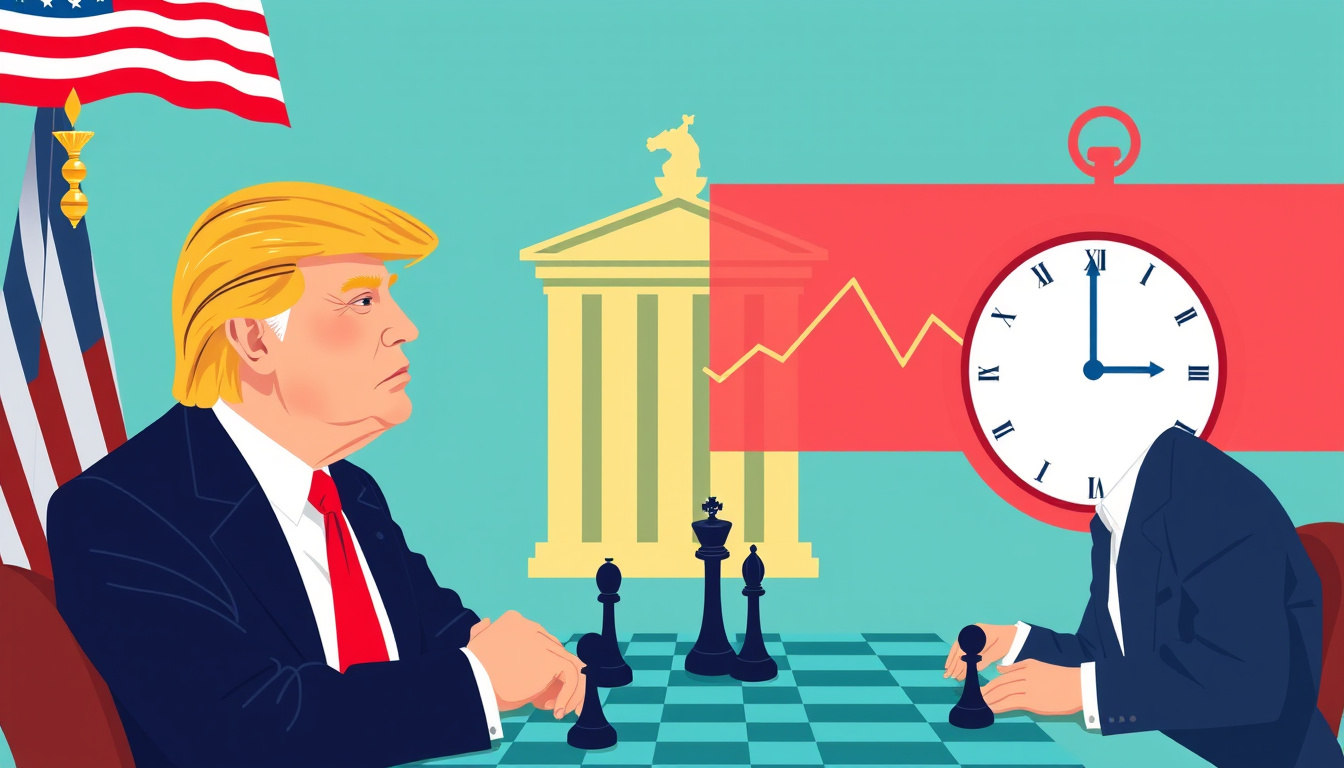Recent discussions have stirred significant speculation around whether former President Donald Trump might move to dismiss Jerome Powell, the current Chairman of the U.S. Federal Reserve (Fed). This speculation is rooted in Trump’s ongoing criticism of Powell’s policies and the potential economic ramifications of a leadership change within the Fed. Understanding this possibility and its implications requires analyzing Trump’s comments, the Fed’s role, and the broader economic landscape.
Trump’s Critique of Jerome Powell and Fed Policy
Trump has been openly critical of Powell throughout his term as Fed Chair, labeling him “horrible” and suggesting that Powell’s handling of inflation and interest rates is misguided. Trump argues that inflation is not as severe as portrayed and emphasizes the strength of the U.S. economy under his administration, citing tariff revenues and domestic industrial growth. However, facts around tariffs’ effectiveness and economic re-industrialization are more nuanced and debated among economists.
The former president has also expressed concern about the high interest rates set by the Fed, which he believes unnecessarily increase the cost of servicing the United States’ substantial national debt—currently hovering near $39 trillion. High interest rates mean greater expenses on debt payments, which could strain government finances. Trump’s stance is that the Fed should consider lowering interest rates, potentially even to as low as 1%, to stimulate economic growth and reduce debt servicing costs.
When asked about hiring a successor for Powell—whose term ends in May 2026—Trump indicated he has several candidates in mind, emphasizing his dissatisfaction with Powell’s intellectual capacity for the role and overall performance.
The Fed’s Mandate and the Balance of Economic Goals
To evaluate the plausibility and potential impact of firing Powell or aggressively cutting rates, it’s crucial to understand the Fed’s dual mandate: maintaining price stability (controlling inflation) and achieving full employment.
- Price Stability: The Fed raises interest rates to cool inflation by reducing consumer spending and borrowing. Conversely, it lowers rates to encourage spending and investment, which can raise inflation if not carefully managed.
- Full Employment: The Fed seeks to keep unemployment low without allowing inflation to rise excessively, walking a fine economic tightrope.
The Fed’s decisions influence not just U.S. markets but global finance since the U.S. dollar remains the dominant currency worldwide. Rapid or poorly considered moves—like abrupt rate cuts—could unsettle markets and the dollar’s value.
Could Trump Fire Powell?
Legally, the President does have the authority to remove the Fed Chair, but such action is highly unusual and politically charged. Powell’s term officially expires in 2026, and firing him now could create significant market volatility and political confrontation. Typically, Fed Chairs serve their full terms to maintain central bank independence, which is seen as essential for economic stability.
However, Trump’s public dissatisfaction and hints at potential candidates suggest he is at least considering changes should he return to power or influence Fed leadership.
What Does the 120k Hint Mean?
The “120k hint” mentioned refers to market speculation or forecasts around economic indicators, possibly linked to employment figures, inflation indices, or monetary policy movements that could signal a shift in Fed policy.
A move by the Fed to cut interest rates substantially—potentially following a leadership change—could trigger a substantial market rally. Historical patterns show that significant rate cuts often stimulate equities, cryptocurrencies (like Bitcoin), and other risk assets as borrowing costs decrease and liquidity increases.
Investors in crypto and stock markets watch these signals closely because a more accommodative Fed could lead to one of the largest market surges in recent history, sometimes referred to as a “bullet” or sharp upward move in asset prices.
Possible Market Outcomes
- If Powell Is Fired and Rates Are Cut: Such an event could spark a sharp rally across traditional and alternative asset classes. Crypto markets, which often respond dramatically to liquidity changes, might see explosive growth.
- If Powell Remains and Rate Hikes Continue: The market might endure continued volatility, with inflation control prioritized over growth, possibly stalling economic recovery and suppressing asset price gains.
- Intermediate Scenarios: Gradual adjustments in leadership and policy could balance inflation concerns with growth incentives, leading to more moderate market responses.
Conclusion
While the idea of Trump firing Jerome Powell is theoretically possible, it remains a complex and uncertain scenario with wide-ranging implications. The Fed’s responsibility to maintain economic stability usually guards against sudden leadership upheavals. Nevertheless, Trump’s vocal opposition and the intrigue around the “120k hint” show how closely economic policy decisions connect to investor expectations.
For market participants, especially in crypto, staying informed about these developments is key. Potential shifts in Fed leadership and policy could define the trajectory of markets for years to come, making strategic positioning essential in navigating this uncertain economic landscape.
By Wolfy Wealth - Empowering crypto investors since 2016
Get Wolfy Wealth Premium
Disclosure: Authors may be crypto investors mentioned in this newsletter. Wolfy Wealth Crypto newsletter, does not represent an offer to trade securities or other financial instruments. Our analyses, information and investment strategies are for informational purposes only, in order to spread knowledge about the crypto market. Any investments in variable income may cause partial or total loss of the capital used. Therefore, the recipient of this newsletter should always develop their own analyses and investment strategies. In addition, any investment decisions should be based on the investor's risk profile.

